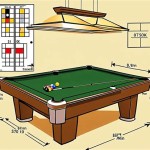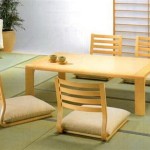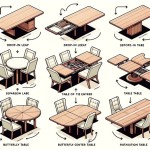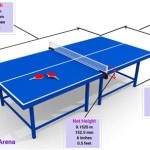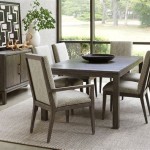Dressing Table Designs for Small Spaces
The modern dwelling, particularly in urban environments, often presents spatial constraints. As a result, interior design must prioritize efficiency and adaptability. The dressing table, traditionally a centerpiece of the bedroom, requires reconsideration in smaller spaces. This article explores various dressing table designs tailored for compact areas, focusing on space optimization, functionality, and aesthetic integration. The objective is to provide a clear understanding of design choices that maximize the practical value and visual appeal of a dressing table without compromising limited square footage.
Wall-Mounted Dressing Tables
Wall-mounted dressing tables offer a significant advantage in small spaces by freeing up floor space. By attaching directly to the wall, these designs eliminate the need for legs or a supporting base, creating the illusion of a larger room. This floating effect enhances visual lightness and allows for easier cleaning underneath the unit.
A key consideration when choosing a wall-mounted dressing table is the wall's structural integrity. The wall must be capable of supporting the weight of the table and its contents. Stud finders and appropriate mounting hardware are essential for secure installation. Furthermore, the height of the table must be carefully considered to ensure ergonomic comfort. The ideal height will allow for comfortable sitting without straining the neck or back.
Design options for wall-mounted dressing tables are varied. They range from simple shelves with integrated mirrors to more elaborate designs that include drawers and compartments for storage. The choice depends on individual needs and organizational preferences. A minimalist approach with a single shelf and a separate, adjustable mirror can be highly effective for those who prioritize simplicity and functionality. Conversely, a wall-mounted unit with multiple drawers can provide ample storage for makeup, jewelry, and other accessories.
Materials used in wall-mounted dressing tables also contribute to their aesthetic appeal and functionality. Lightweight materials such as MDF (Medium Density Fiberboard) or plywood are common choices, often finished with laminate or veneer for durability and visual appeal. Solid wood options are available but may add significant weight, requiring stronger wall support. Mirrors are typically integrated into the design, either as a fixed component or as a separate, adjustable unit. The size and shape of the mirror should be proportionate to the table and the overall space.
Lighting is a critical aspect of any dressing table, and wall-mounted units are no exception. Integrated LED lighting, either above or to the sides of the mirror, can provide optimal illumination for makeup application and grooming. The color temperature of the light should be chosen carefully to mimic natural daylight, avoiding harsh shadows and color distortions. Flexible LED strips can be easily installed to provide subtle and even lighting.
Folding Dressing Tables
Folding dressing tables represent another effective solution for maximizing space in compact areas. These designs are characterized by their ability to be folded away when not in use, freeing up valuable floor space. They are particularly well-suited for multi-functional rooms where the dressing table is only needed occasionally.
The core concept of a folding dressing table involves a hinged design that allows the tabletop to be folded down against the wall or into a cabinet. When folded down, the unit appears as a small cabinet or a decorative panel, minimizing its visual impact on the room. When in use, the tabletop can be easily unfolded to provide a functional dressing surface.
Folding dressing tables can incorporate various storage options. Some designs feature built-in shelves or drawers that remain accessible even when the table is folded down. Others may include hidden compartments that are revealed only when the table is in use. The choice of storage options depends on the specific needs and preferences of the user.
Material selection is crucial for ensuring the durability and functionality of a folding dressing table. Solid wood is a popular choice for its strength and aesthetic appeal. However, lighter materials such as plywood or MDF can also be used, provided they are properly reinforced at the hinges and joints. The hinges themselves should be of high quality to ensure smooth and reliable operation over time.
Mirror integration is another important consideration. Some folding dressing tables incorporate a mirror into the folding tabletop, while others feature a separate, wall-mounted mirror. The mirror should be positioned to provide optimal visibility when the table is in use and should be easily accessible when the table is folded down. Lighting can be integrated into the design, either as a fixed fixture or as a flexible LED strip that can be adjusted as needed.
The installation of a folding dressing table requires careful attention to detail. The unit should be securely mounted to the wall using appropriate hardware. The hinges should be properly aligned to ensure smooth folding and unfolding. The height of the table should be adjusted to provide comfortable seating when in use. When folded down, the unit should be flush with the wall to minimize its visual impact on the room.
Multi-Functional Furniture
In small spaces, multi-functional furniture serves as a critical tool for maximizing efficiency. Dressing tables can be cleverly integrated into other pieces of furniture, such as desks, bedside tables, or even bookshelves. This approach allows for the consolidation of multiple functions into a single piece of furniture, saving valuable space and reducing clutter.
A common example of multi-functional furniture is a desk that doubles as a dressing table. During the day, the desk can be used for work or study. At night, it can be transformed into a dressing table by simply lifting a hinged tabletop to reveal a mirror and storage compartments. This design is particularly well-suited for bedrooms that also serve as home offices.
Another example is a bedside table that incorporates a hidden dressing table. The bedside table can function as a standard nightstand, providing storage for books, lamps, and other bedside essentials. However, it can also be transformed into a dressing table by opening a drawer to reveal a mirror and makeup storage. This design is ideal for small bedrooms where space is at a premium.
Bookshelves can also be adapted to serve as dressing tables. A section of the bookshelf can be fitted with a mirror and storage compartments, creating a discreet dressing area. This design is particularly useful for those who prefer a more unconventional approach to interior design.
When designing multi-functional furniture, it is important to consider the ergonomics of each function. The height of the desk or table should be appropriate for both working and grooming. The mirror should be positioned to provide optimal visibility from a seated position. The storage compartments should be easily accessible from both functions.
Material selection is also crucial for multi-functional furniture. The materials should be durable and aesthetically pleasing. Solid wood is a popular choice for its strength and natural beauty. However, engineered wood products, such as plywood or MDF, can also be used, provided they are properly finished and reinforced.
Lighting is an essential aspect of any dressing table, and multi-functional furniture is no exception. Integrated LED lighting can provide optimal illumination for both working and grooming. The color temperature of the light should be chosen carefully to mimic natural daylight, avoiding harsh shadows and color distortions. Flexible LED strips can be easily installed to provide subtle and even lighting.
Storage solutions are paramount in small spaces. The design of a dressing table should incorporate ample storage for makeup, jewelry, hair accessories, and other grooming essentials. Drawers, shelves, and compartments should be strategically placed to maximize storage capacity and accessibility. Dividers and organizers can be used to keep items neatly arranged and easily accessible.
Mirrors are an integral part of any dressing table. The size and shape of the mirror should be proportionate to the table and the overall space. A large mirror can create the illusion of a larger room, while a smaller mirror can be more appropriate for smaller spaces. Adjustable mirrors are particularly useful, as they allow for precise positioning and optimal visibility.
Seating is also an important consideration. A comfortable stool or chair is essential for prolonged grooming sessions. The height of the seating should be appropriate for the height of the table. A stool or chair with built-in storage can be a particularly useful addition to a small space.
The aesthetic integration of the dressing table with the overall décor of the room is essential to ensure a cohesive and visually appealing space. The style and color of the dressing table should complement the existing furniture and accessories. A minimalist design can be a good choice for a modern or contemporary space, while a more ornate design can be appropriate for a traditional or vintage space. The choice of materials and finishes should also be carefully considered to ensure a harmonious and balanced aesthetic.

Small Space Ideas 8 Chic And Tiny Dressing Tables

Perfect Small Dressing Table Design Ideas Decorpot

The Ultimate Guide To Finding Your Dream Dressing Table Design Saraf Furniture

Discover Small Dressing Table Designs For Compact Bedrooms

Perfect Small Dressing Table Design Ideas Decorpot

8 Latest Dressing Table Designs That You Must Know

17 Modern Dressing Tables To Suit Every Interior In 2024

Discover Small Dressing Table Designs For Compact Bedrooms

Dressing Tables Ideas 5 Latest Table Designs For Bedroom

Pin On Home Ideas

